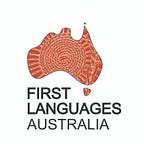Case study — School programs and Guugu Yimidhirr language revival at Hope Vale, Queensland
Informed by Cassy Nancarrow, Karin Calley and Lillian Bowen for Global Lessons: Indigenous languages and multilingualism in school programs
Today children in traditionally Guugu Yimidhirr speaking communities in Northern Queensland, Australia, rarely hear their heritage language spoken by adults in the community. However, Hope Vale Primary School reports some remarkable outcomes in recent years, with language competency increasing, along with energy and interest in language across the community. This is a great source of pride to teachers and the community. Factors supporting these outcomes include the development of quality resources, innovative classroom ideas, the commitment and skill of a committed teacher, and a productive collaboration with regional education and language organisations.
While Guugu Yimidhirr has been offered inconsistently at Hope Vale Primary School in the past (Ridley, 2002), 2011 saw Cape York Institute renew its commitment to the teaching of Guugu Yimidhirr at the Hope Vale Campus of the Cape York Aboriginal Australian Academy (CYAAA). The school-based language revival initiative began in 2013 and was the first attempt to teach an Indigenous language using the Direct Instruction pedagogy favoured by the Cape York Institute. Guugu Yimidhirr is the first fragile language to be taught using this approach. The Institute promotes the method as suitable to language revitalisation situations where there are few language speaker authorities, as lessons are scripted, scaffolded and immersive. The program is also aligned to the Queensland Education Department Aboriginal and Torres Strait Islander Syllabus and so can meet its standards and requirements.
In 2015 a Guugu Yimidhirr classroom was established, providing a Guugu Yimidhirr domain within the school. The classroom contains books and teaching resources developed by Cape York Institute and the Pama Language Centre. Since its establishment in 2015, Pama Language Centre has provided teaching resources, linguistic advice and complementary community language activities. These include the publication of Guugu Yimidhirr children’s books, including activity books, read aloud e-books, and a Guugu Yimidhirr song book written by teacher Lillian Bowen and her classes; as well as choir development, songwriting, theatre activities and field trips.
Guugu-Yimidhirr is offered to each student for 2–3 hours per week. Lessons are taught by a local Guugu Yimidhirr teacher, Hope Vale Elder Lillian Bowen. Lillian Bowen is a Remote Area Teacher Education Program (RATEP) graduate, a fluent Guugu Yimidhirr speaker and a respected community member. Through the program, Lillian also encourages language awareness and use in the community, engaging the students in a variety of community development and arts activities. Irene Hammett acts as a substitute teacher when Lillian is not available, however, both teachers raise concern about succession planning to see the program continue strong into the future.
The outcomes of these activities have been an inspiration to the community, and serve as learning tools both in and outside the classroom. Bowen reports parents expressing pride in their children’s Guugu Yimidhirr learning, and commenting that their children are becoming more fluent speakers. Some parents have been sitting in on her classes, and Bowen, along with Dora Gibson and Shirley Costello, also offer adult community language lessons at the local Indigenous Knowledge Centre (IKC).
The Pama Language Centre’s support of the Cape York Partnership has been invaluable; they have sourced linguists, curriculum writers and creative professionals to help develop the extensive language teaching resources that form the basis of lessons. Guugu Yimidhirr activities and resources are available to other communities in the region, though there is less uptake than at Hope Vale.
To properly build on and support the school program, utilise current enthusiasm and see rapid growth in community language use over the next five years, Guugu Yimidhirr language workers see language teacher training/succession planning, language camps for school-aged children, and a language nest for school preschool children as important priorities.
Key Lessons from the Guugu Yimidhirr case study:
· Qualified, experienced and passionate teachers are crucial
· Alignment to standard curriculum documents provides rigour, structure and accountability
· Extensive support from regional education and language organisations spreads the load and consolidates and sustains program development and growth
· Future planning, especially for teacher development are critical
References
Alberta Hornsby. (2015). Alberta Hornsby, Guugu Yimithirr Language legend profile. On Gambay: Languages map. First Languages Australia. Retrieved September 26, 2017, from http://gambay.com.au/profiles/95
Cape York Aboriginal Australian Academy (n.d.) Hope Vale campus website. Queensland Government. Retrieved September 26, 2017, from https://cyaaa.eq.edu.au/campuses/hopevale/pages/hopevale.aspx
Cape York Partnerships (2015). A school lesson in Aboriginal language Guugu Yimidhirr. Cape York Partnerships YouTube Channel [Video File]. Retrieved September 26, 2017, from https://www.youtube.com/watch?v=IF9RD6gtlfE
Cape York Partnerships (2015). Language and Culture. On the Cape York Partnerships website. Retrieved September 26, 2017, from http://capeyorkpartnership.org.au/cogs-of-change/language-and-culture/
Deavin, G. (2015). Learning language with Aunty Irene || From Project: Mother Tongue. ABC Open. Retrieved September 26, 2017, from https://open.abc.net.au/explore/92850
Global schools through languages (2016). A plan for supporting successful global citizens in Queensland state schools. State of Queensland (Department of Education and Training). Retrieved from
http://advancingeducation.qld.gov.au/SiteCollectionDocuments/global-schools-plan.pdf
Pama Language Centre (2016.) Guugu Yimidhirr page on the Pama Language Centre website. Retrieved September 26, 2017, from http://pamalanguagecentre.org.au/guugu-yimidhirr/
Pama Language Centre (2016). Guugu Yimidhirr teacher Lillian Bowen’s Prep class perform their school play in Guugu Yimidhirr. Pama Language Centre Facebook page. Retrieved September 26, 2017, from https://www.facebook.com/PamaLanguageCentre/videos/1849797631967119
Pama Language Centre (2016). Pama Language Centre website. Cape York Partnerships. http://pamalanguagecentre.org.au/
Ridley, A. (2002) The Guugu Yimithirr Languages Other than English Program at Hope Vale: ‘If the Kids have English they go Further, but if we Drop the Language we’ll Lose it Forever’. PhD Thesis, James Cook University: Cairns.
Salter, P (n.d.). RATEP Program. James Cook University. Retrieved September 26, 2017, from https://www.jcu.edu.au/college-of-arts-society-and-education/education/teacher-education-for-aboriginal-and-torres-strait-islander-people/ratep
State Library of Queensland (2013). Indigenous Knowledge Centres. State Library of Queensland website. Retrieved September 26, 2017, from http://www.slq.qld.gov.au/about-us/indigenous-knowledge-centres
State Library of Queensland (2013). Keeping Traditional Language Alive — Guugu Yimidhirr. State Library of Queensland, YouTube Channel [Video File]. Retrieved September 26, 2017, from https://www.youtube.com/watch?v=VKE_khQzQ2o
